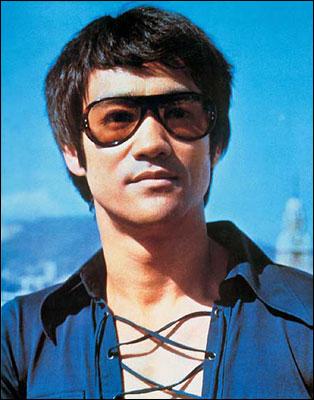下面以三個頁面分別命名為frame.html、top.html、bottom.html為例來具體說明如何做。
frame.html 由上(top.html)下(bottom.html)兩個頁面組成,代碼如下:
 <!DOCTYPE HTML PUBLIC "-//W3C//DTD HTML 4.0 Transitional//EN">
<!DOCTYPE HTML PUBLIC "-//W3C//DTD HTML 4.0 Transitional//EN"> <HTML>
<HTML> <HEAD>
<HEAD> <TITLE> frame </TITLE>
<TITLE> frame </TITLE> </HEAD>
</HEAD>  <frameset rows="50%,50%">
<frameset rows="50%,50%"> <frame name=top src="top.html">
<frame name=top src="top.html"> <frame name=bottom src="bottom.html">
<frame name=bottom src="bottom.html"> </frameset>
</frameset> </HTML>
</HTML>現在假設top.html (即上面的頁面) 有七個button來實現對bottom.html (即下面的頁面) 的刷新,可以用以下七種語句,哪個好用自己看著辦了。
語句1. window.parent.frames[1].location.reload();
語句2. window.parent.frames.bottom.location.reload();
語句3. window.parent.frames["bottom"].location.reload();
語句4. window.parent.frames.item(1).location.reload();
語句5. window.parent.frames.item('bottom').location.reload();
語句6. window.parent.bottom.location.reload();
語句7. window.parent['bottom'].location.reload();
top.html 頁面的代碼如下:
 <!DOCTYPE HTML PUBLIC "-//W3C//DTD HTML 4.0 Transitional//EN">
<!DOCTYPE HTML PUBLIC "-//W3C//DTD HTML 4.0 Transitional//EN"> <HTML>
<HTML> <HEAD>
<HEAD> <TITLE> top.html </TITLE>
<TITLE> top.html </TITLE> </HEAD>
</HEAD> <BODY>
<BODY> <input type=button value="刷新1" onclick="window.parent.frames[1].location.reload()"><br>
<input type=button value="刷新1" onclick="window.parent.frames[1].location.reload()"><br> <input type=button value="刷新2" onclick="window.parent.frames.bottom.location.reload()"><br>
<input type=button value="刷新2" onclick="window.parent.frames.bottom.location.reload()"><br> <input type=button value="刷新3" onclick="window.parent.frames['bottom'].location.reload()"><br>
<input type=button value="刷新3" onclick="window.parent.frames['bottom'].location.reload()"><br> <input type=button value="刷新4" onclick="window.parent.frames.item(1).location.reload()"><br>
<input type=button value="刷新4" onclick="window.parent.frames.item(1).location.reload()"><br> <input type=button value="刷新5" onclick="window.parent.frames.item('bottom').location.reload()"><br>
<input type=button value="刷新5" onclick="window.parent.frames.item('bottom').location.reload()"><br> <input type=button value="刷新6" onclick="window.parent.bottom.location.reload()"><br>
<input type=button value="刷新6" onclick="window.parent.bottom.location.reload()"><br> <input type=button value="刷新7" onclick="window.parent['bottom'].location.reload()"><br>
<input type=button value="刷新7" onclick="window.parent['bottom'].location.reload()"><br> </BODY>
</BODY> </HTML>
</HTML>下面是bottom.html頁面源代碼,為了證明下方頁面的確被刷新了,在裝載完頁面彈出一個對話框。
bottom.html 頁面的代碼如下:
 <!DOCTYPE HTML PUBLIC "-//W3C//DTD HTML 4.0 Transitional//EN">
<!DOCTYPE HTML PUBLIC "-//W3C//DTD HTML 4.0 Transitional//EN"> <HTML>
<HTML> <HEAD>
<HEAD> <TITLE> bottom.html </TITLE>
<TITLE> bottom.html </TITLE> </HEAD>
</HEAD> <BODY onload="alert('我被加載了!')">
<BODY onload="alert('我被加載了!')"> <h1>This is the content in bottom.html.</h1>
<h1>This is the content in bottom.html.</h1> </BODY>
</BODY> </HTML>
</HTML>
解釋一下:
1.window指代的是當前頁面,例如對于此例它指的是top.html頁面。
2.parent指的是當前頁面的父頁面,也就是包含它的框架頁面。例如對于此例它指的是framedemo.html。
3.frames是window對象,是一個數組。代表著該框架內所有子頁面。
4.item是方法。返回數組里面的元素。
5.如果子頁面也是個框架頁面,里面還是其它的子頁面,那么上面的有些方法可能不行。
附:
Javascript刷新頁面的幾種方法:
1 history.go(0)
2 location.reload()
3 location=location
4 location.assign(location)
5 document.execCommand('Refresh')
6 window.navigate(location)
7 location.replace(location)
8 document.URL=location.href
自動刷新頁面的方法:
1.頁面自動刷新:把如下代碼加入<head>區域中
<meta http-equiv="refresh" content="20">
其中20指每隔20秒刷新一次頁面.
2.頁面自動跳轉:把如下代碼加入<head>區域中
<meta http-equiv="refresh" content="20;url=http://www.wyxg.com">
其中20指隔20秒后跳轉到http://www.wyxg.com頁面
3.頁面自動刷新js版
<script language="JavaScript">
function myrefresh()
{
window.location.reload();
}
setTimeout('myrefresh()',1000); //指定1秒刷新一次
</script>
ASP.NET如何輸出刷新父窗口腳本語句
1. this.response.write("<script>opener.location.reload();</script>");
2. this.response.write("<script>opener.window.location.href = opener.window.location.href;</script>");
3. Response.Write("<script language=javascript>opener.window.navigate(''你要刷新的頁.asp'');</script>")
JS刷新框架的腳本語句
//如何刷新包含該框架的頁面用
<script language=JavaScript>
parent.location.reload();
</script>
//子窗口刷新父窗口
<script language=JavaScript>
self.opener.location.reload();
</script>
( 或 <a href="javascript:opener.location.reload()">刷新</a> )
//如何刷新另一個框架的頁面用
<script language=JavaScript>
parent.另一FrameID.location.reload();
</script>
如果想關閉窗口時刷新或者想開窗時刷新的話,在<body>中調用以下語句即可。
<body onload="opener.location.reload()"> 開窗時刷新
<body onUnload="opener.location.reload()"> 關閉時刷新
<script language="javascript">
window.opener.document.location.reload()
</script>
在彈出窗口的BODY中加入 onUnload="window.opener.location.reload();" 關閉彈出窗口則自動刷新父窗口.




